 |
 |
 |
| |
Virologic Failure Rate 1.4% in 3 Years of CAB + RPV Phase 3 Trials:
Pre-existing RPV Resistance, CAB and RPV Troughs Predict Failure
|
| |
| |
HIV Drug Therapy Glasgow, October 23-26, 2022
Mark Mascolini
Only 1.4% of 1651 phase 3/3b trial participants had confirmed virologic failure to long-acting injected cabotegravir plus rilpivirine (CAB + RPV) during up to 3 years of follow-up [1]. Multivariate analysis identified a handful of virologic failure predictors, most notably pre-existing RPV resistance mutations, HIV-1 subtype A6/A1, and CAB and RPV trough concentrations. But a more useful model for picking CAB + RPV candidates may be one incorporating baseline obesity rather than 4-month CAB and RPV troughs.
Guidelines recommend every-month or every-2-months CAB + RPV to maintain viral suppression, advice based partly on the potency of this intermittently injected combination: After 48 weeks in phase 3/3b trials only 1% of 1651 participants had confirmed virologic failure, and only 4 more virologic failures arose during continuing follow-up. Multivariate analyses of data to that point identified a heightened risk of confirmed virologic failure in the first year of therapy with the combination of 2 or more of the following pretreatment factors: pre-existing RPV resistance mutations, HIV-1 subtype A6/A1, and body mass index at or above 30 kg/m2 (obesity).
This new analysis aimed to find predictors of confirmed virologic failure in data accumulating after week 48. Researchers combined results from the FLAIR trial through week 124, ATLAS through week 96, and ATLAS-2M through week 152 to perform a multivariable analysis of 1224 complete records and a baseline factor analysis of 1363 complete records. These analyses considered dosing regimen (once a month or once every 2 months) along with demographic, viral, and pharmacokinetic variables.
A large majority of study participants maintained an undetectable viral load for up to 3 years of follow-up. The research team figured a 1.4% overall confirmed virologic failure rate. They calculated overall unadjusted incidence of virologic failure at 0.54 per 100 person-years, with little difference between the three doses studied: every 4 weeks, every 8 weeks, and every 4 weeks transitioning to every 8 weeks. The virologic failure difference between every-4-week and every-8-week dosing stood at about 1 additional failure with every-8-week dosing over 200 person-years.
In the extended analysis, pre-existing RPV resistance mutations remained an independent predictor of confirmed virologic failure (adjusted incidence rate ratio [aIRR] 25.7, 95% confidence interval [CI] 7.17 to 92.2, P < 0.0001), as did subtype A6/A1 (aIRR 15.5, 95% CI 4.69 TO 50.9, P < 0.0001). This expanded model did not confirm body mass index as a driver of virologic failure. But predicted CAB trough concentrations 4 weeks after the initial injection and predicted CAB and RPV troughs 44 weeks after injection predicted confirmed virologic failure. Whether the antiretrovirals got dosed every 4 weeks or every 8 did not affect virologic failure risk; neither did the L74I mutation in HIV integrase.
Using the three new predictors of virologic failure-RPV resistance mutations, HIV-1 subtype A6/A1, and week-4 troughs (which correlate with week-44 troughs)-the researchers found that 0 of 644 people (0%) with none of these factors had confirmed virologic failure, 5 of 396 people (1.3%) with any one factor had virologic failure, 17 of 232 people (7.3%) with two or more factors had confirmed virologic failure, and 8 of 39 people (20.5%) with three or more factors had confirmed virologic failure. Sensitivity (97.6%) and specificity (36.4%) were optimal for this model when it used three or more factors, but only 3% of the population had 3 or more factors.
Returning to the three baseline virologic failure risk factors (RPV resistance mutations, HIV-1 subtype A6/A1, obese body mass index), the researchers found that among 970 participants with none of these factors, only 4 (0.4%) had confirmed virologic failure. Among 404 participants with any 1 of these 3 baseline factors, 8 (2.0%) had confirmed virologic failure. And among 57 people with 2 or more baseline risk factors, 11 (19.3%) had confirmed virologic failure. Having 3 or more risk factors did not further improve prediction of confirmed virologic failure. Sensitivity (96.7%) and specificity (47.8%) were optimal when this model used 2 or more baseline factors.
Adding up those three groups with 0, 1, or 2 or more baseline risk factors, the researchers saw that the model predicted 23 of 1431 people (1.6%) would go on to virologic failure, a prediction very close to what actually happened: Among 1651 people taking CAB + RPV for up to 3 years in phase 3/3b trials, 23 (1.4%) had confirmed virologic failure. For the clinician, this model also has the utility of relying on baseline factors rather than pharmacokinetic data (the trough concentrations) that can be collected only after treatment has begun.
Reference
1. Orkin C, Schapiro JM, Perno CF, et al. Expanded multivariable models to assist patient selection for long-acting cabotegravir + rilpivirine treatment: clinical utility of a combination of patient, drug concentration, and viral factors associated with virological failure over 152 weeks. HIV Drug Therapy Glasgow, October 23-26, 2022.
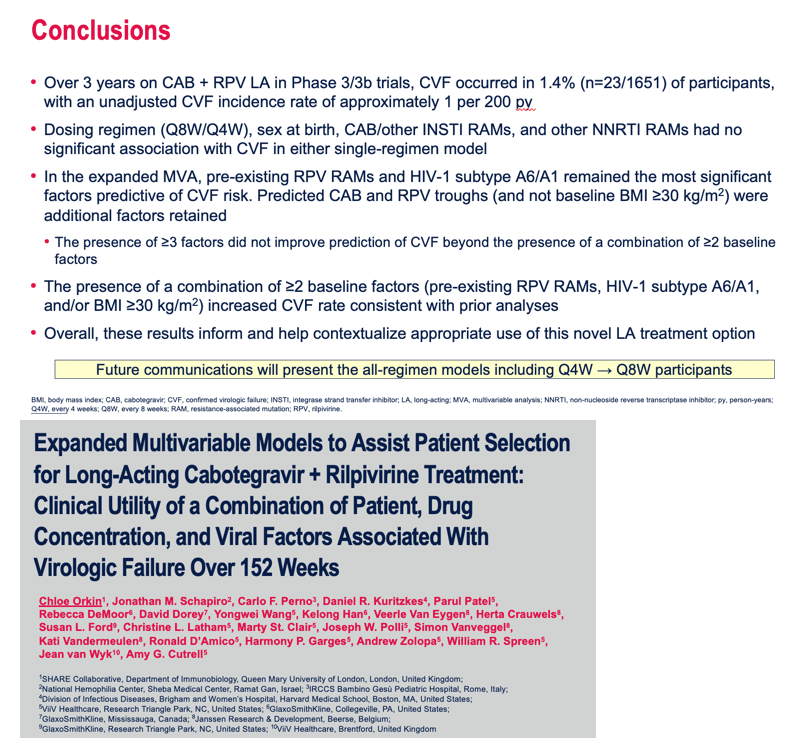
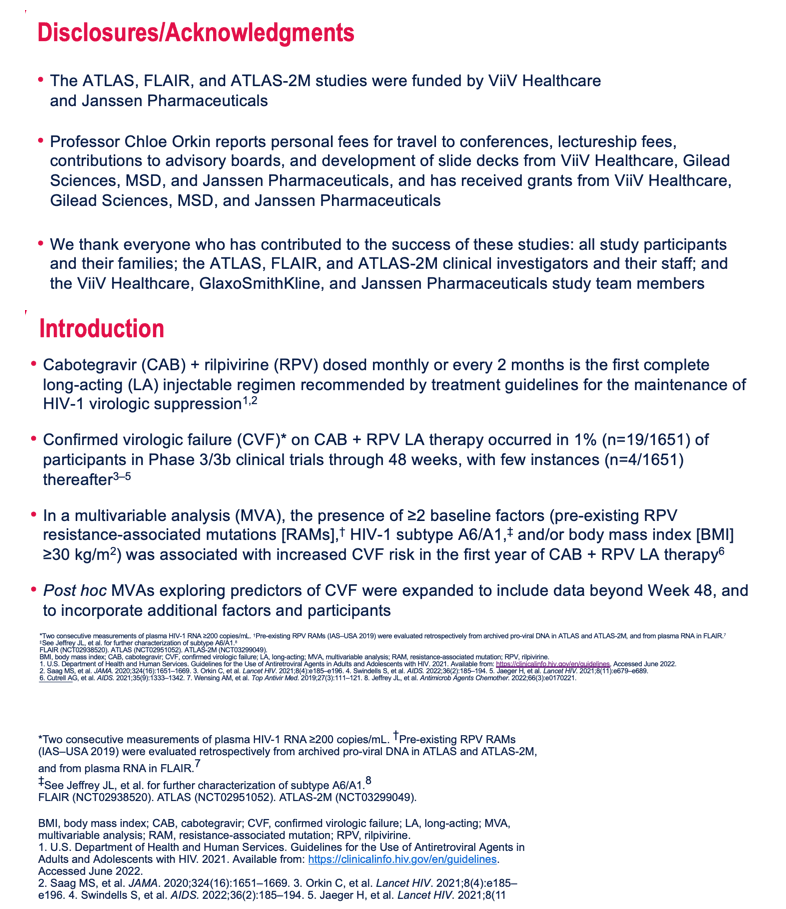
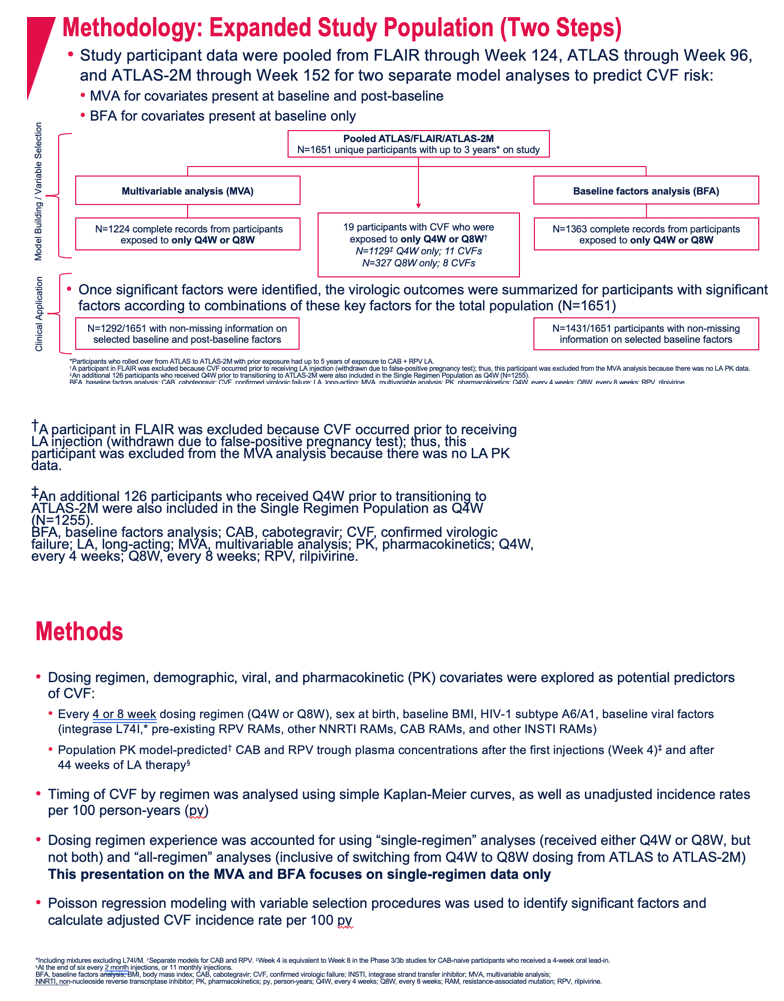
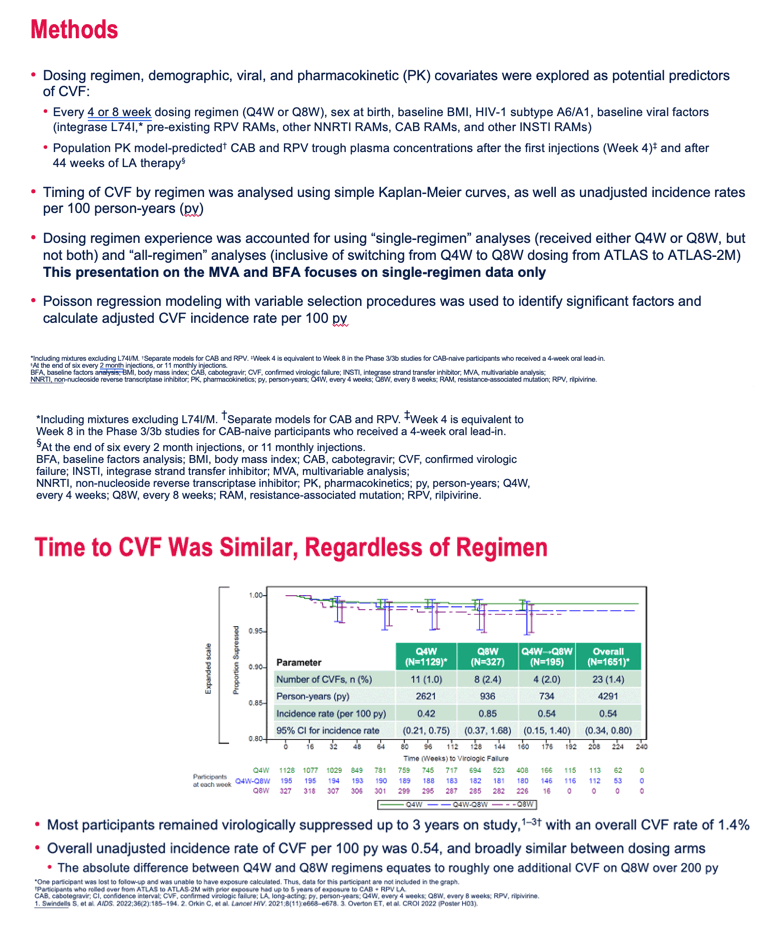
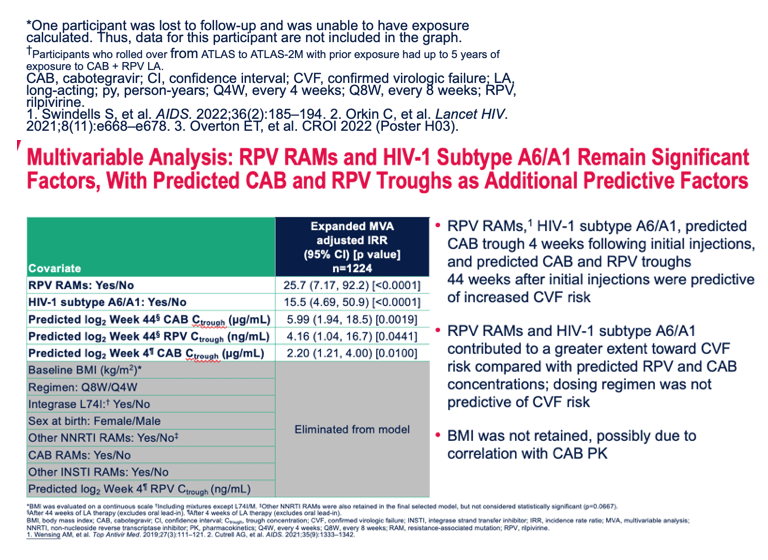
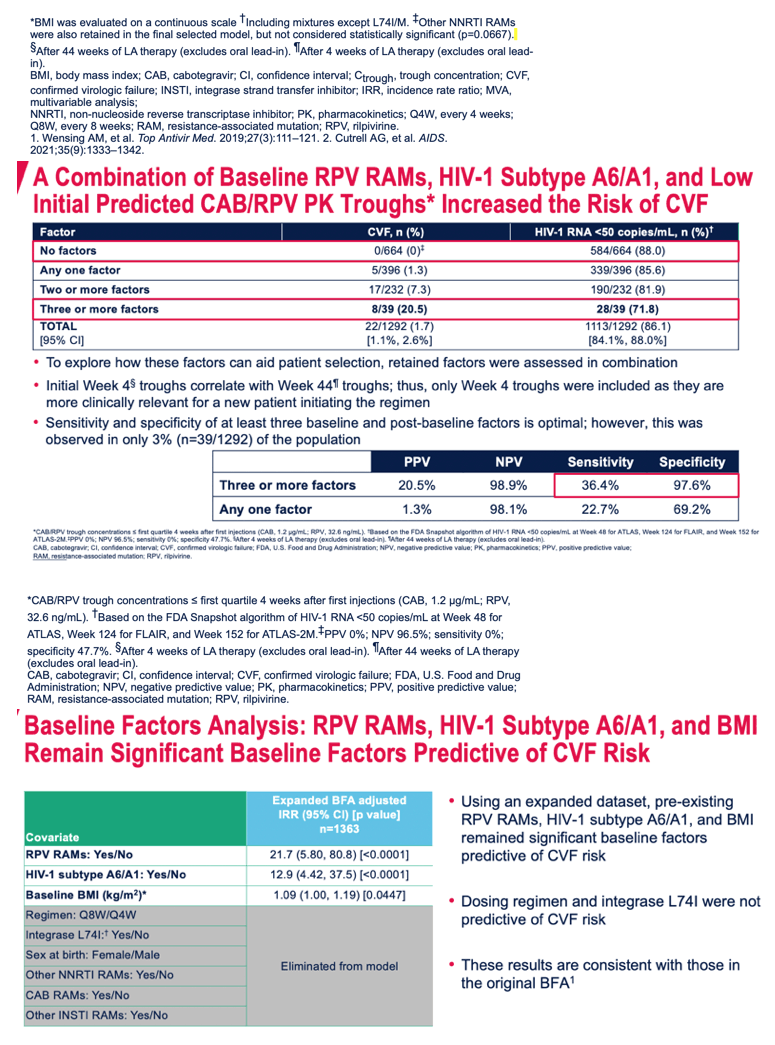
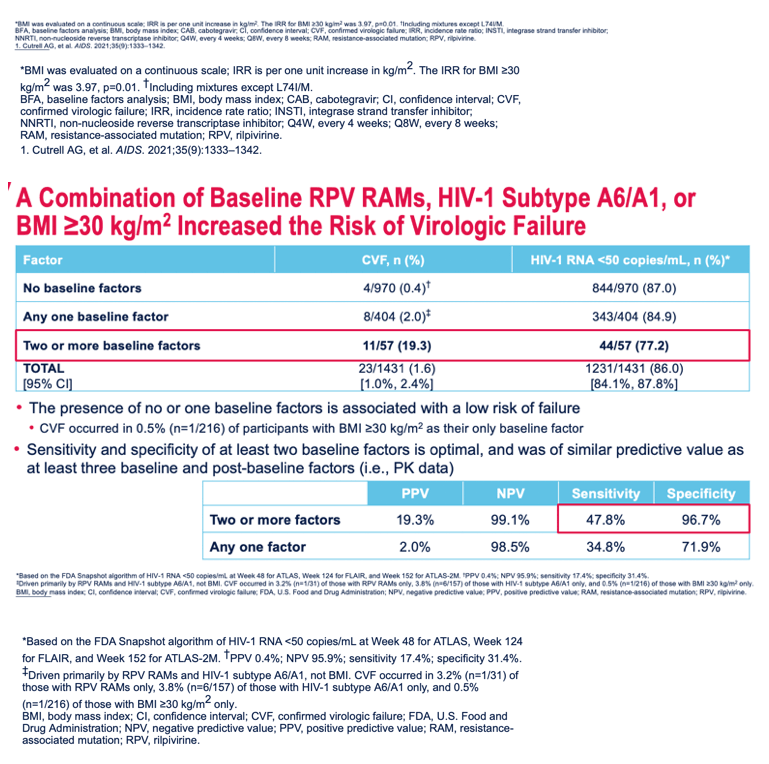
|
| |
|
 |
 |
|
|